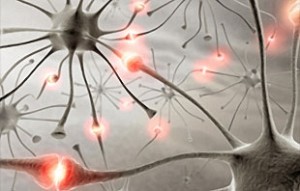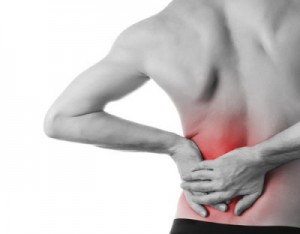Courtesy of:
John H. Keefe III, D.C.
(918) 663-1111
IN THE NEWS: Vitamin B3 may prevent glaucoma June 4, 2017Writing in NEJM, Columbia ophthalmologists say a form of Vitamin B3 may be able to stop the progression of glaucoma by protecting the eye’s neurons. A recent study shows that vitamin B3 can prevent glaucoma in mice. This should inspire researchers to test the idea in clinical trials, write two Columbia University ophthalmologists in a commentary published in New England Journal of Medicine. “This is a new potential treatment pathway for glaucoma,” says Jeffrey Liebmann, MD, who wrote the commentary with George Cioffi, MD, chair of ophthalmology. “Right now, we can slow the progression of the disease by reducing pressure inside the eye with drugs or surgery, but we can’t halt the disease in many patients. Our ultimate goal is to find a treatment that can prevent the degeneration of neurons that cause vision loss.” Glaucoma is the leading cause of irreversible blindness and affects more than 70 million people worldwide. The need for neuron-sparing therapies has become even more acute as people live longer. “People used to have glaucoma for 15 years,” says Dr. Liebmann. “Now, with increasing longevity and duration of disease exposure, the lifetime risk of visual disability is increasing. Although several drugs have been tested previously in clinical trials, none have received FDA approval to protect neurons in glaucoma patients. In the new study, researchers identified how neurons begin degenerating in glaucoma, and demonstrated that nicatinamide (a form of Vitamin B3) could prevent the neurodegeneration. Nicatinamide supplements were able to prevent glaucoma in 70 percent of mice predisposed to the disease. Adding a gene therapy to increase nicatinamide protected even more mice. Drs. Liebmann and Cioffi are now beginning preliminary studies in preparation for a human clinical trial of nicatinamide.
WELLNESS: A new health benefit of chocolate: reduced risk of AFib? While so-called “chocoholics” may have gotten a bad rap over the years, a new study has found that eating a small amount of chocolate every week or so may decrease your risk of developing a serious type of irregular heart rhythm. While so-called “chocoholics” may have gotten a bad rap over the years, a new study has found that eating a small amount of chocolate every week or so may decrease your risk of developing a serious type of irregular heart rhythm. The study, published in the journal Heart, used data collected for a long-term study of about 55,500 people in Denmark. The participants were between 50 and 64 years old when the study began, and provided information about their diets when they entered the study between 1993 and 1997. Researchers then linked the diet data to Denmark’s national health registries to see who was diagnosed with atrial fibrillation (AFib). AFib is a quivering or irregular heartbeat that can lead to blood clots, stroke, heart failure and other heart-related complications. In the United States, at least 2.7 million people have been diagnosed with it, according to the American Heart Association. Based on their data, about 3,346 cases of AFib occurred in study participants over an average of 13.5 years. Those who ate one serving, which is about 1 ounce of chocolate per week, were 17 percent less likely to be diagnosed with atrial fibrillation by the end of the study than those who reported eating chocolate less than once a month. Those who ate 2 to 6 ounces per week were less likely to be diagnosed with AFib, while those who ate more than an ounce of chocolate per day were 16 percent less likely to have the condition. For women, the biggest risk reduction was linked to eating one serving of chocolate per week. For men, the biggest risk reduction was associated with eating two to six servings per week. “I think our message here is that moderate chocolate intake as part of a healthy diet is an option,” lead author Elizabeth Mostofsky, of the Harvard T.H. Chan School of Public Health and the Beth Israel Deaconess Medical Center in Boston, told Reuters. Mostofsky’s team said that while they cannot definitively conclude that chocolate prevents AFib, eating cocoa and cocoa-containing foods may help heart health because of they contain a high volume of flavanols, which are compounds believed to have anti-inflammatory, blood vessel-relaxing and anti-oxidant properties.
CHIROPRACTIC: Low Back Pain: An Ice Pack or the Hot Tub? Many patients perform some self-care when they first hurt their lower back, hoping this will keep them out of a doctor’s office. While home remedies can sometimes make the pain go away, sometimes they don’t. It just depends on what you try. When the back is first hurt, it’s often a sprain/strain type of injury with accompanying muscle spasm. When a nerve in the low back becomes pinched or irritated, the body will protect the delicate nerves by keeping you from moving and risking further nerve injury. The easiest way for the body to do this is to cause the back muscles to spasm in the injured area. Muscle pain can be quite severe and heat can sometimes soothe the pain. For this reason, many patients take to the heating pad or to the hot tub to try and get some relief. This should be avoided in an acute injury because inflammation is present. With inflammation, there is increased heat and the additional heat you provide is like adding gasoline to a fire. The results are usually not good. A better choice with an acute injury is to ice the area, but this also needs to be done with some caution. The simplest ice pack is ice cubes placed in a plastic bag. While effective, you can cause a frostbite injury if you leave the pack on for too long. When you first ice the area, you will go through several phases before some pain relief is achieved. At first, the pack will feel cold. The next phase is a burning sensation and the ice will almost feel hot. This is followed by an aching or throbbing sensation. Just before the area is numbed, a very sharp pain will be experienced followed by the relief you desire. It can take between five to ten minutes to go through all of the phases. Once numbness is achieved, the pack should be removed. You should most definitely not fall asleep while the pack is on. In 1993 the US government released a report on low back pain listing spinal adjustments as the number one effective treatment.
FUNNY BONE: The Quotes of Steven Wright: Ambition is a poor excuse for not having enough sense to be lazy.@@ - Hard work pays off in the future; laziness pays off now.@@ I intend to live forever ... So far, so good.@@ If Barbie is so popular, why do you have to buy her friends?@@ My mechanic told me, "I couldn't repair your brakes, so I made your horn louder."@@ To steal ideas from one person is plagiarism; to steal from many is research.@@ Everyone has a photographic memory; some just don't have film.@@ If at first you don't succeed, skydiving is not for you.





